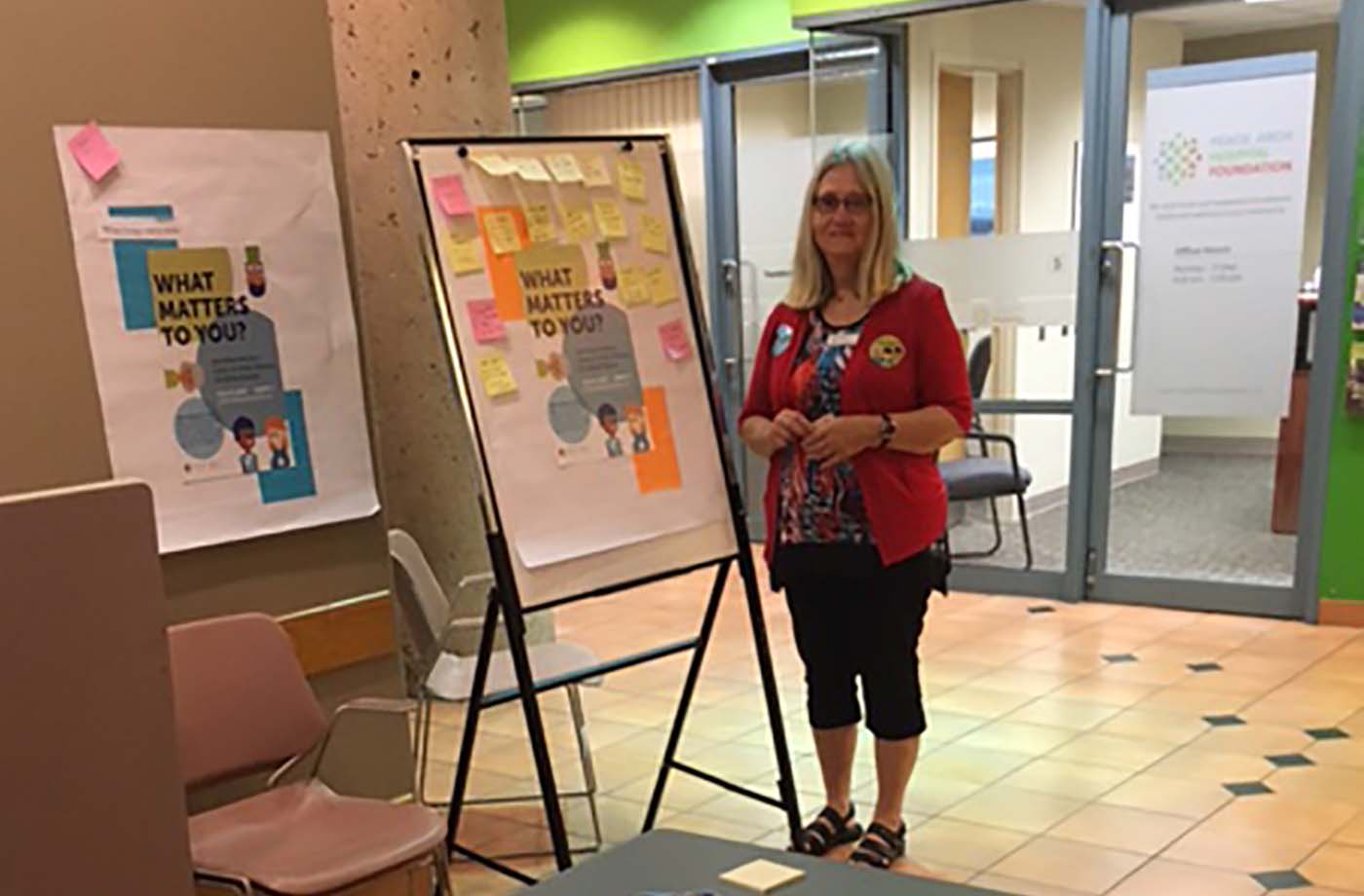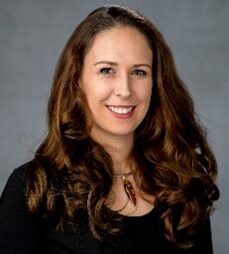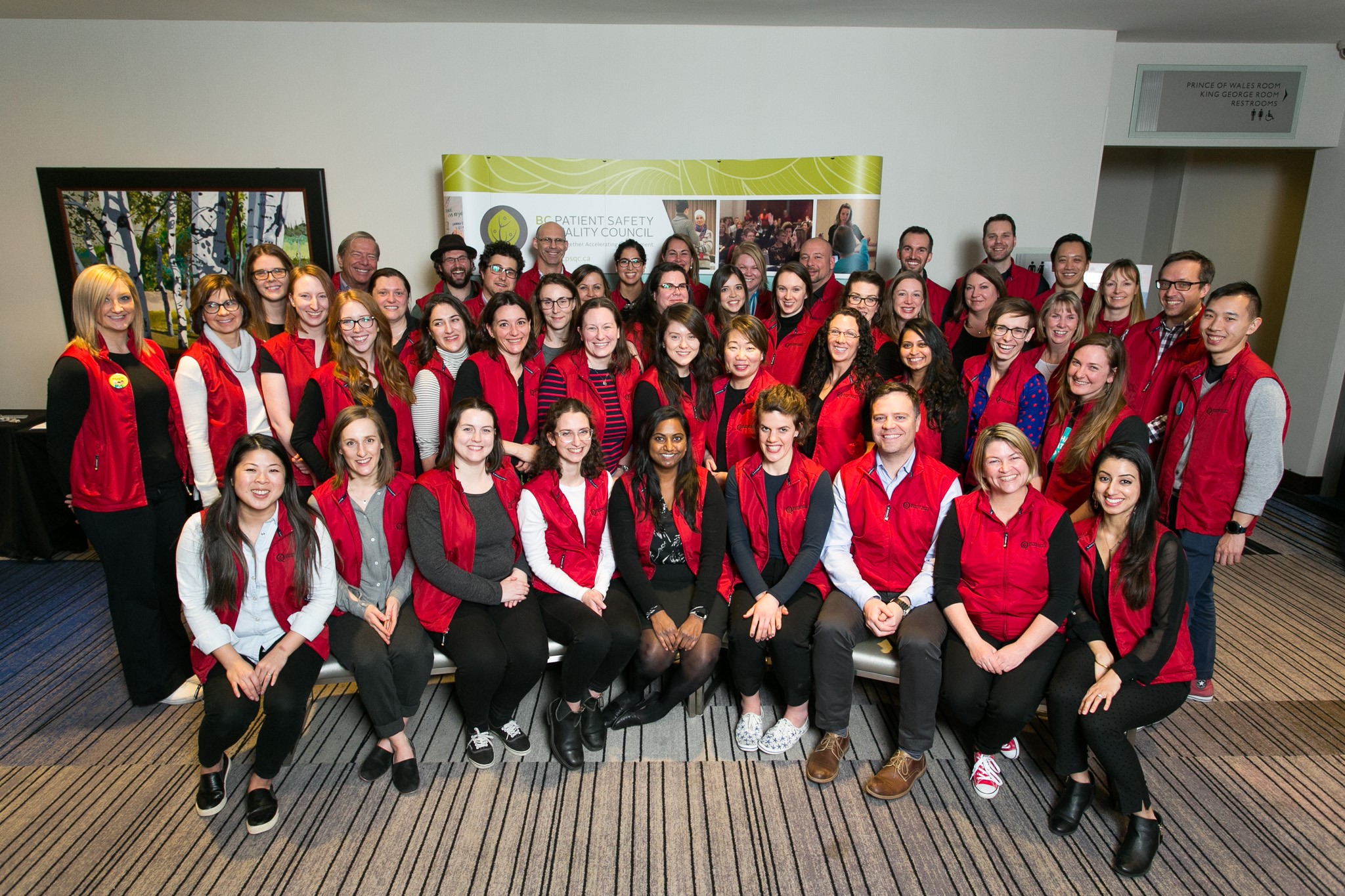Posted • Last updated
Categories: My Experience
Our patient partner Linda Perkins, from Surrey, has been fighting blindness for the last 20 years. In this post, she tells us her story and the meaningful difference a true health care partner has made in her health and her life:
“I am going blind. Mercifully this has been a slow process that has allowed for adaptations to be made in small increments. I was not always this way, nor did I expect to be facing these limitations but here I am, now 20 years into this journey.
When my children were in high school and I was in graduate school, we undertook a family holiday in Maui. One afternoon I thought it was a good opportunity to pull out my draft thesis document and do some editing. To my surprise, the lines of text were no longer straight; instead, they were full of humps and dips on every page. It was nearly impossible to read. I closed my book and thought I ought to get out of the sun because maybe it was doing something to my vision.
A day later, the problem was still there. I then convinced myself that it was a different form of migraine aura but it persisted. At home, I immediately consulted my family doctor, who sent me off to an ophthalmologist. This consultation was the big turning point that literally changed the path of my life. He was not much of a conversationalist, seeming to prefer the technical aspects of his medical practice. The message I received was abrupt:
-You have a genetic condition in your retina that causes angioid streaks and they rupture and bleed, causing the symptoms you are having. I am sending you off to the hospital eye clinic for treatment.
I asked, “Am I going to be blind?” He just said, “you will never be totally in the dark”, turned and walked out of the examining room quickly without looking back at me. The receptionist handed me an appointment card for the eye clinic and a Canadian National Institute for the Blind (CNIB) brochure.
Outside, I sat on a bench facing the river and cried miserably, completely overwhelmed by shock and fear.
Particularly annoying was the fact I had been given no opportunity to ask questions and get the type of information I really needed. As an intelligent and articulate woman, I had a huge information deficit. What was happening to me? How much time do I have left?
Fortunately it was a matter of days before I had an appointment at the eye clinic. Many tests and a six-hour wait went by before my turn as the last patient of the day. This physician looked very tired but patiently explained my treatment possibilities, although every option sounded like more damage would be a consequence. I noted that his hand was a bit shaky and I hesitated. The laser required that we both be exceptionally still. I was also aware that he had been off work for a few months following the death of one of his children. I asked if I could have a day or so to think about it and he immediately suggested that it was indeed late in the day and there was a younger, fresher physician in the eye clinic on the Monday. Thus I became a patient of a young, eager, brand new physician for whom I was his first patient in Calgary and who would be my ally for the next 13 years.
On my first visit to his office clinic, my retinal specialist took some time to answer my most pressing questions about the disease, and the time trajectory. The part of the discussion he initiated was probably the most important one –he asked me “what I needed from him to help me”. The question both amazed and delighted me. My response tumbled out: “I need the right treatment to keep as much vision as I can because I still need to work for as many years as possible. My husband has left me and I am trying to help my two kids get through university. I also need to get as close as possible to being eligible for my job pension at 65.” He agreed to keep that goal in mind and work with me, even writing it in my chart.
That simple conversation and his willingness to thoroughly explain the pros and cons of every treatment that I undertook in his care gave me a lot of confidence.
When the Alberta health system stopped charging extra fees for patients getting treatment if they had macular degeneration, they also refused to consider inclusion of my rare disease so I was stuck with high payments to save my sight. He went on a letter writing campaign to advocate for my case. Eventually I was able to stop the out of pocket payments.
For the next 13 years, he saw me every three months and performed many types of treatments with diligent follow-up even as his practice grew to huge numbers and 12 hour days. I always felt I was in secure hands. Progression was slowed to a crawl. I continued to be able to work up to age 63, the closest I could get to pensionable age but it was close enough. When I told him that I had to give up working, he immediately enquired if I was satisfied with what he had done to get me that far.
I thanked him for all his ability, time and treatments but also for being a caring person and giving me so much hope. This was a true partnership between a physician and a patient. Decisions were always shared.
Reflecting on my experience, I am reminded that just one conversation where a patient feels they matter and are treated as a unique individual can make such a significant impact in building a therapeutic relationship.”
Author: Linda Perkins
Linda Perkins brings a wealth of experience, as both a retired Alberta health care leader and patient into her role at Patient Voices Network. As a South Surrey resident, Linda was quick to put her name forward to join her local health services area patient advisory council and put her talents to work. She is currently advising the South Surrey/White Rock team on patient issues and taking her unique perspective to various groups, encouraging them to include the patients’ voice in their quality work.


